9 immersive experiences in Las Vegas you should book ASAP
Las Vegas, a city that markets itself as a place to play, is a natural fit for immersive experiences. And now the hard part: What is immersive?
Broadly speaking, we are defining immersive as anything that feels as if we are entering a story. It can be a show, an attraction or a cocktail bar, but the key is that there is some sort of theme throughout, so much so that nearly everywhere we look the spell is not broken.
Itâs not always an exact science, of course, but the focus is less on hotels and casinos with a design motif and more on a space such as Play Playground, which dedicates itself to creating a world in which we are surrounded by full-size, physical games.
Planning your weekend?
Stay up to date on the best things to do, see and eat in L.A.
Or a theatrical production such as âParticle Ink,â in which we, as guests, become participants. Even a venue such as the Sphere can qualify, as its curving 270-degree screen â about the size of four football fields â invites us to partake in a slightly active role. We must look above and below to get a sense of the imagery before us.
Immersive entertainment asks us to lean in in some way, to feel as if we must actively engage with our surroundings to get the most out of them.
And Las Vegas, a city that prides itself on fantasy and escapism, is quickly becoming an immersive destination. These are some of our favorites.

Play Playground
Thatâs a core thesis of Play Playground, a high-energy, adults-only, interactive-focused palace dedicated to simple, communal games that have an ever-so-slight competitive edge. Play Playground is tucked into the Luxor Hotel & Casino; think of it as part adult bounce house and part grown-up arcade, only all the games are tangible â no virtual reality or video games â and focused on getting groups to interact with one another.
One inspiration was old-school party-focused tabletop games. See, for instance, âDoctor! Doctor!â The Play Playground original nods to Operation, only here the surgery is performed by connecting shapes of different colors. Another influence? Obstacle courses, as in the neon-lighted challenge of âRinger Runâ: Guests try to prevent a ring from touching the sides of a twisting track. And then thereâs âPoker Parkour,â in which oversize poker chips try to knock us off our balance.
All told there are 20 games â word games, shape games, tossing games â designed to get us moving, acting silly and sharing moments with friends, family or even strangers. Or just sit at the bar and people watch. Either way, film producer-turned-Play Playground co-founder Jennifer Worthington says thereâs a deeply rooted mission at work here.
âI think that we as a country have lost a sense of community,â says Worthington, who notes that Play Playground, which is attracting more than 30,000 customers per month, will soon be expanding to other cities.
âIn the old days,â Worthington says, âpeople went to church and the YMCA and places they would go to find community. Now we donât have that. Our lives are all about not building community. Weâre sitting at the couch scrolling through Instagram with fake friends and fake lives and living in an imaginary world. For me, play is a way to bring people together.â
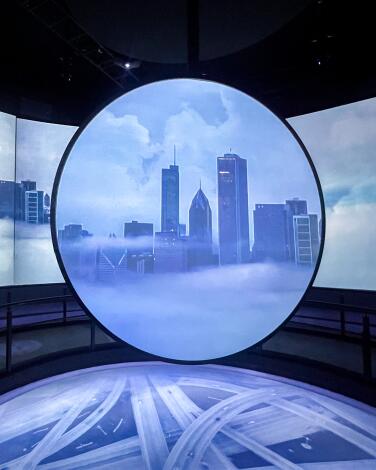
Flyover
As a reference point, think of Disney California Adventureâs popular Soarinâ Around the World attraction. This is a like-minded flight simulator centered on a 52.5-foot-wide spherical screen.
There are differences. Flyover theaters are slightly more intimate than those found in Disneyâs theme parks, and since this space is dedicated solely to the make-believe sensation of flight, experiences can run a bit longer at about 25 minutes, including preshows.
As a perpetually homesick Chicagoan, I was eager to try Flyoverâs âBelieve Chicago.â I left it wanting to book a trip to the Midwest as soon as I could. Flyoverâs newest experience impresses by creating the illusion of featuring no obvious cuts. This is a seamless flight video that captures multiple days and events in Chicago â we circle in and out of the Chicago Theater, soar along the river during a St. Patrickâs Day celebration, careen around city streets, glide under the âLâ tracks, buzz local sporting events and dive down skyscrapers. Even as someone who once lived in the city, I saw it from multiple new angles.
Also recommended: âWonders of the American West.â The clear reference point here is Soarinâ Over California, but âWondersâ hits a wider geographical area and places the emphasis on our national parks. Lake Tahoe, Zion National Park, the Mojave Desert and the Grand Canyon are among the locales visited in this relatively serene journey that centers on Western wildlife.
The multiple nods to Disneyâs Soarinâ are no slight, as the Flyover attraction comes courtesy, in part, of Rick Rothschild, a longtime Walt Disney Imagineer credited with helping to develop the flight simulator ride. With Flyover, Rothschild continues to refine the formula.
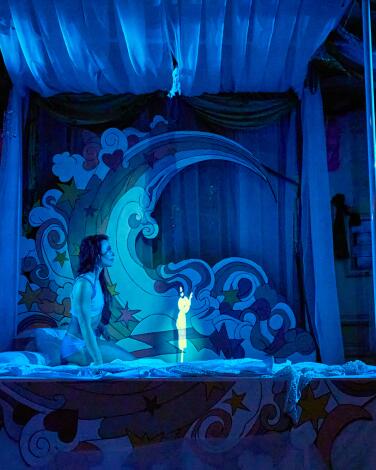
Particle Ink
Particle is his name, and heâs a glowing white figure with a circular head and a rectangular body, a mix of simple shapes that can convey an array of human emotions via elastic, exaggerated movements. Animation, rooted in imagination, has long had the power to amplify human feelings and heighten reality. But in âParticle Ink,â animation enters our reality, as Particle, for instance, leaps from wall to pillow, dashes across a bed curtain and even cries into a physical bucket.
With âParticle Ink,â animation has entered its live-theater era. Itâs doing so via an exploration-focused production, meaning guests wander from room to room following actors as the acts unfold â or, in the case of âParticle Ink,â guests may be trailing animated figures or a puppet.
Think of it, then, as a sort of next-generation âSleep No More,â New Yorkâs long-running immersive production that is set to close this year. Only here, the theme is an original fairy tale rather than âMacbeth.â
This merging of tech and animation into a believable landscape â what the creators refer to as the â2.5 dimensionâ â is the triumph of âParticle Ink.â But itâs not the showâs heart. This is ultimately a story about loss and searching to regain oneâs footing after extreme grief.
âItâs about everything from childhood wonderment to grief and loss to really accepting yourself,â says Jennifer Tuft, whose company Kaleidoco is producing the show. âItâs about striking a balance about reaching within and understanding oneself. These are concepts that donât necessarily lend themselves to what people generally consider âLas Vegas entertainment.ââ
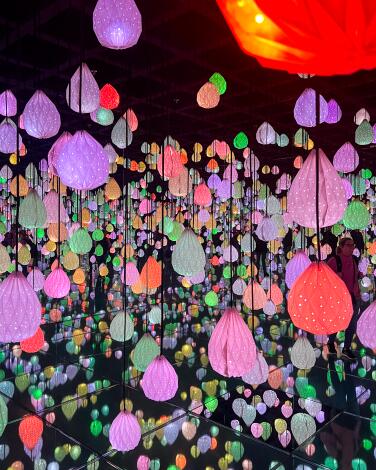
Arte Museum
What had been spaces full of refined projection art, including a few that reference Yayoi Kusamaâs infinity rooms, here become more lighthearted and communal . Itâs a good spot to linger and to play, to watch hand-drawn creations morph into digital art.
The rest of the Arte Museum, which was born in Korea and soon will land at Santa Monica Place, isnât as interactive, but it does focus on shape-shifting digital art. Projections are placed before us and below us, and in one moment we can be standing on a virtual beach taking in an aurora borealis-inspired scene and in another watching elk, seemingly constructed out of flowers, being conjured before us in a forest. Animals glow, waterfalls become infinite and gardens are presented as elastic and multi-dimensional.
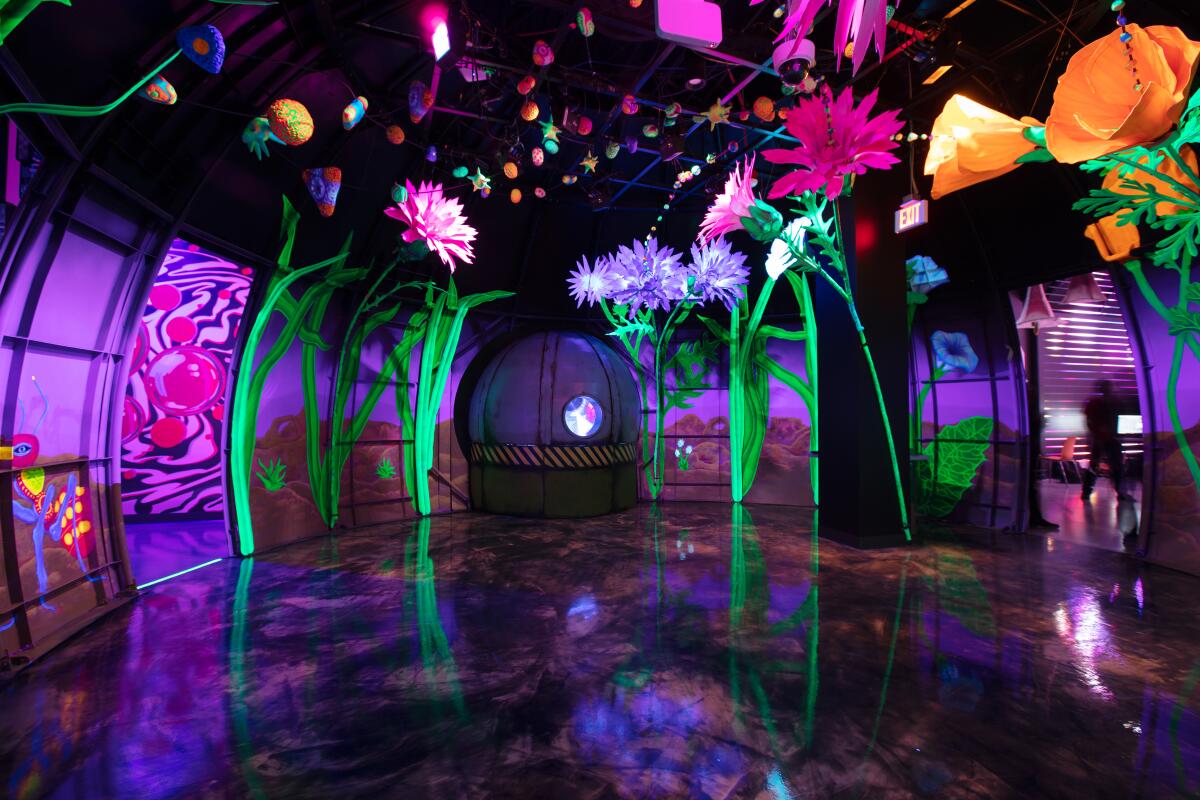
Meow Wolf's Omega Mart
We enter via a mock grocery store, one with not-so-hidden portals into the large-scale art exhibitions beyond. In the market, one can find mini takes on classical sculptures that appear to be constructed out of meat as well as walls of milk and orange juice that look as if they are disintegrating before us. And that says nothing of the host of sarcastic fake products (see the Plausible Deniability laundry detergent), many of which we can purchase.
The Meow Wolf design philosophy is ultimately one thatâs based on active participation by the guest, a shift from less assertive forms of entertainment of yore, be it a museum or the early days of theme parks. Stray, not-so-hidden paths and an assortment of nooks dot a Meow Wolf exhibition, inviting guests to choose their own narrative. Story threads are peppered throughout. Omega Mart, for instance, grapples with environmental distress and corporate responsibility.
This can be reflected via wildly colorful, all-enveloping art exhibits. A centerpiece of Omega Mart is Meow Wolfâs take on a desert, where flowers tower above us, rock walls shift via trippy animations and what could be a river glows beneath us. Itâs warming, but it also hints at some form of mutation.
Throughout Omega Mart, one can stumble into spaces full of disorienting mirrors and cynically ridiculous takes on corporate back rooms. Come for the art, stay for the game-like story and be on the prowl for some inquisitive robots.
All these byzantine paths and shifts in art direction are what Meow Wolf co-founder Sean Di Ianni, currently at work on a West Los Angeles outpost for the group, refers to as âgood mystery confusion.â In turn, a Meow Wolf space is a place to experience art but also one full of narrative puzzles, allowing guests to place themselves in a mystical story.
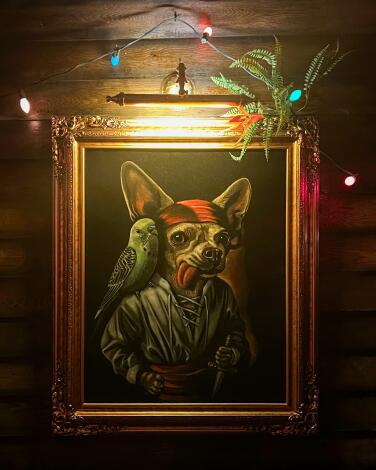
Stray Pirate
Although the menu features a full array of tiki classics and mocktails, I was here for the seafaring tale. And Stray Pirate has an extensive one.
The legend: Feared pirates were traversing the Caribbean for treasure when the crew was lured via a sirenâs song into a mysterious grotto full of irresistible riches. Only it was a trap, and these pirates would emerge alive but with four legs, paws and tails. Their portraits, courtesy of artist Gwen Rosewater, dot the walls, and whether depicting sloppy tongues, mangy bandannas or furry scowls, theyâre full of charm.
I waltzed up to the bar and sat, enchanted by the underwater scene that ran on a loop in front of me. âWe knew we didnât want it to be too tropical,â owner Chris Gutierrez says of the visuals. âWe wanted it to be like the pirate ship sunk in the wrong part of the neighborhood. Hence the sharks, the squids, the sunken pirate ship and the anglerfish that comes cruising by.â
Theme, says Gutierrez, is practically a necessary ingredient in bar entrepreneurship today.
âWhen youâre talking about getting off the Strip and getting into the Arts District â and weâre not even on the main street in the Arts District â you have to really want to be here,â Gutierrez says.
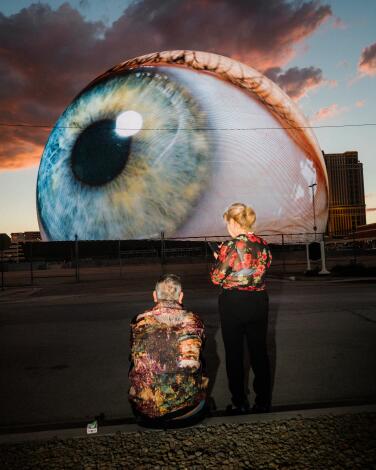
The Sphere
Many of us by now have seen photos of the Sphereâs LED outer body, which has portrayed everything from a blinking eye to a grinning jack-oâ-lantern to various advertisements or images of the cosmos. Itâs highly visible from the air â or the Las Vegas Monorail â but less so from the Strip. But the digital orb is arresting, a structure that seems to represent our video game age; this is a building with an electronic sheen that appears to want to play with us.
Inside, the Sphere presents itself as a surprisingly intimate arena. Its capacity is around 18,000 people, but the seating sections are stacked, wrapping around a relatively small stage and an all-enveloping wall of screens. The latter are capable of some nifty illusions â crisp enough to appear as a window to the outdoors and malleable enough to look as if they are closing in on us.
But the Sphere also fits into a tradition. In the 19th century, crowds flocked to painted panoramas. In the 1890s, it was the birth of cinema that provided awe-worthy illusions. Today, we have the Sphere, its towering imagery seeking to inspire us to fantasize. Does it work? Concerts here arenât cheap, but if a favorite artist makes its way to the Sphere, itâs worth entertaining the idea of a visit. Beyond the visuals, the Sphere possesses a surround sound system that allows vocal ticks to come across loud and clear.
On a more daily basis, however, the Sphere is also home to Darren Aronofskyâs film âPostcards From Earth,â a visually focused experience that also allows one to tour the venue, home to robotics and holographic art.
âThe curving screens,â former Times columnist Carolina A. Miranda wrote in a review of the film, âmake it feel like a true immersion. You can observe a school of fish before you, then look up and see the sunlight piercing the water, as if you too were inhabiting the depths. The camera travels through shrines, churches and mosques where you marvel not only at the scale but at the details of dome-topping mosaics youâd need binoculars to spy in person.â
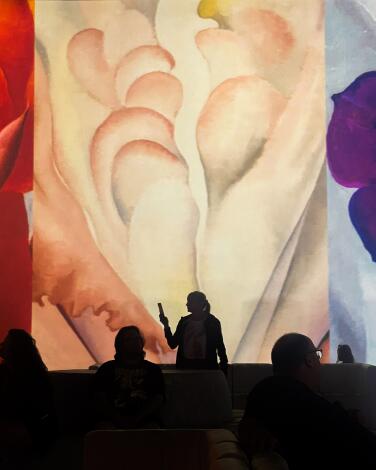
Area15 and Illuminarium
And thereâs more to come. On the horizon, at the time of writing, is a game-meets-escape room themed to the âJohn Wickâ franchise. Then thereâs Universal Horror Unleashed, a year-round experience inspired by Universalâs popular Halloween Horror Nights events. Area15 continues to position itself as a space dedicated to interactive entertainment.
As part of oneâs day here, itâs worth venturing outside the main building to check out Illuminarium. A quick word of warning: Iâm not always the biggest fan of so-called immersive art exhibits that remix the work of known artists into projections (think âImmersive Van Goghâ).
But Illuminarium remains one of the better spots to partake of such exhibits, offering not only grown-up-only events on some nights but also featuring vibration technology in the floor, not to mention being a space specifically designed for high-resolution projections.
I spent about 90 minutes here, luxuriating in the artwork of Georgia OâKeeffe, and was happy to escape the blacklighted loudness of Area15 next door.
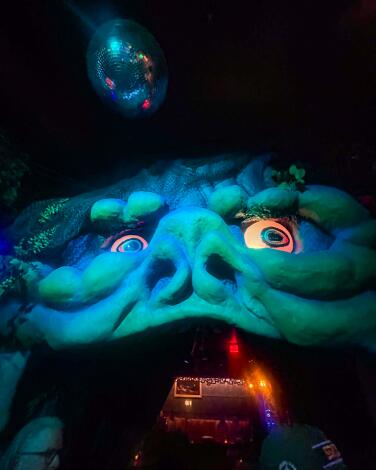
The Golden Tiki
You may be treated to a singer performing Elvis Presley covers, or you may simply sit at the bar and watch the two animatronic birds, which are often sprouting dialogue not fit to be quoted here. No real surprise, as the space has an assortment of nude oil paintings hanging over its tables, making it clear that this 24-hour Chinatown destination is reveling in its various vices.
And yet everywhere one looks there is something to demand our attention, be it shrunken heads of well-known personalities, robotic hula dancers above the bar or an assortment of random artifacts from Disneyland. Though it has a tiki spine, the Golden Tiki possesses a hoarderâs heart, a place directly playing with the idea that Las Vegas is a theme park for grown-ups.
Sign up for The Wild
Weâll help you find the best places to hike, bike and run, as well as the perfect silent spots for meditation and yoga.
You may occasionally receive promotional content from the Los Angeles Times.




